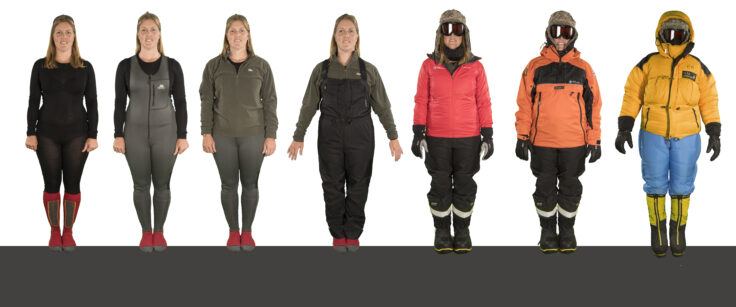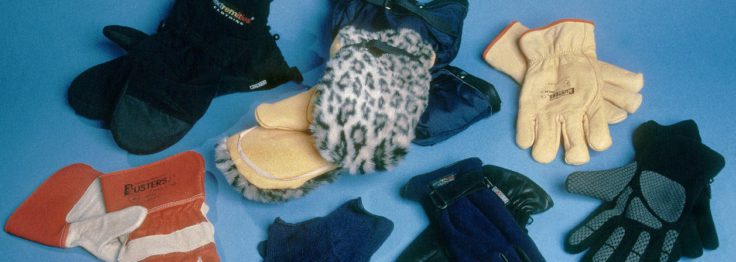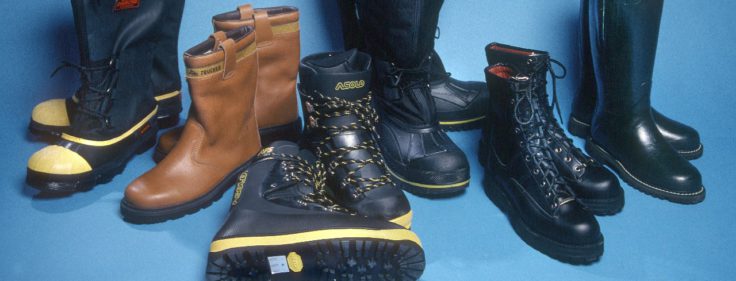To work safely in the polar regions it is important to wear the right clothing and have the best equipment.
Today we have a good understanding of how the human body works in the cold. With a knowledge also of the properties of certain materials we choose clothes made from a wide range of man-made and natural fabrics.

For polar clothing to work effectively it must:
- Keep the body warm, especially fingers and toes to avoid cold injury
- Allow perspiration to disperse
- Allow free movement
- Be comfortable whatever the weather
- protection from environmental challenges (from crush to cold injuries)
Experience has shown that the ‘layer method’ is the best way of achieving these needs over the range of environmental conditions in which BAS operates. The sub-Antarctic is cool and wet whilst the Antarctic continent is drier and very cold. In most circumstances several layers of lightweight clothes are better than one or two layers of thick, heavy clothes. The layers allow good ventilation, and at the same time the trapped air acts as good insulation against the cold.

The number of layers can be adjusted according to how cold the temperature is and the activity of the wearer.

Footwear epitomises the variety of Antarctic activities and conditions. Double insulated mountaineering boots are used for skiing and work on rock. Knee-length “mukluks” provide very high thermal insulation in a layered range of materials that are efficient only when used on cold dry snow and which require drying out overnight, often in the apex of your tent. Safety work boots are used around the stations and on Polar vessels.

BAS polar clothing continues to evolve to take advantage of the latest designs and materials available.
